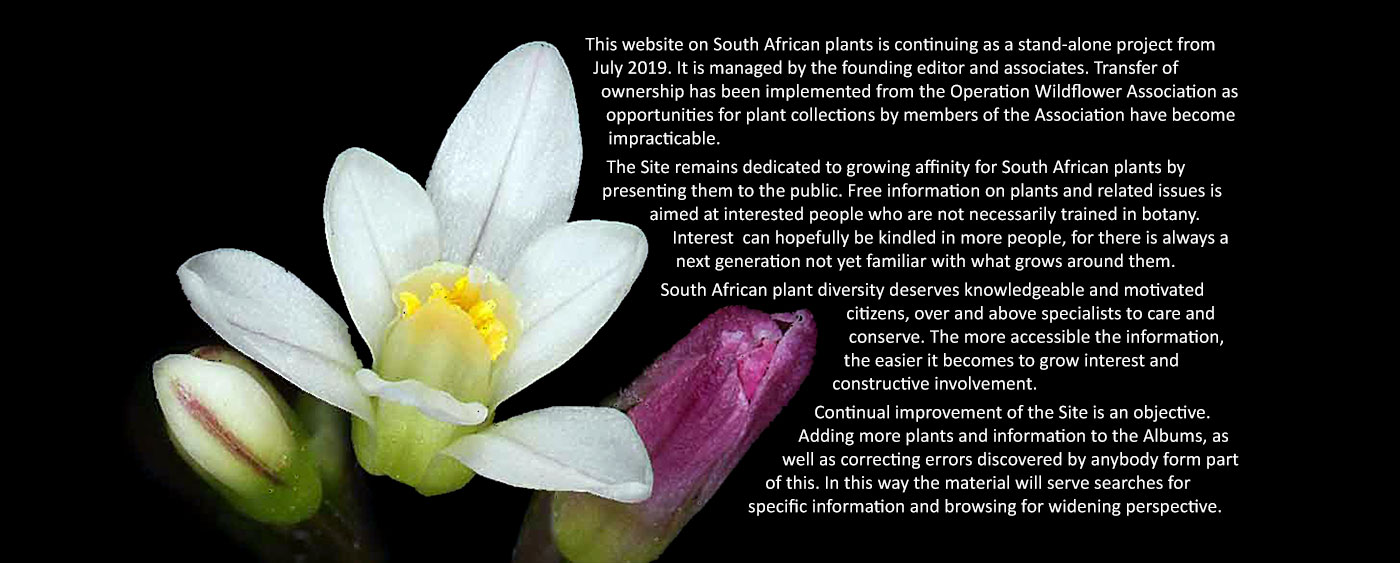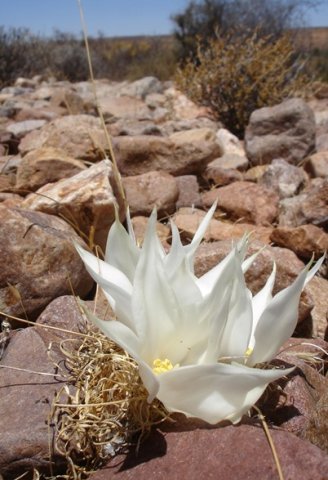A Focus on South African Plants

For Users of this Site
1. Navigation among the Albums or searching for a Plant
There is an Album for every South African plant genus represented by at least 12 posts on the Site. The Albums and posts are alphabetically arranged using botanical names. Each post or Album Item consists of a picture with text. Genera for which the number of pictures posted is smaller than 12 are grouped together in the Types Albums.
The latest Albums on genera are the ones on Dyschoriste, Gloriosa and Dicoma. This means that photos and stories of plants belonging to these genera already on the Site, together with the new material, have been moved from the more general Types Albums called Shrubs and Bulbs to their own new Albums under Genera. There are now more than 240 such Genera Albums. The biggest ones (most photos), belong to the genera Crassula, Euphorbia, Pelargonium, Aloe and Erica. Additional plant and related material are shown in Albums on Habitat, Regions and Parks and Gardens.
Apart from these Genera Albums and Types Albums, there are additional Albums introducing geographical parts of South Africa as Region Albums. Habitat Albums introduce issues relating to vegetation and targeted geographical features. Some notable Parks and Gardens Albums are also represented. The latest Regions Album is the one on Nature's Valley and the latest Parks and Gardens Album is on Tietiesbaai also known as the Cape Columbine Nature Reserve.
Check the Information section for the bibliography, glossary, subject index, the photographers and other information.
The Search Box shortens the search for plants and subjects dealt with, particularly where no dedicated Album exists.
2. Want to talk about a Plant or an Album item?
The Editor can be approached with comments, questions, corrections, information and suggestions by using the following email address:
Please identify the Album Item clearly by exact title and album name in the subject line of your email. Please also state your name.
Similarly, communication regarding the functioning of the Site or technical aspects of it can be directed to the Webmaster at:
3. The Operation Wildflower Site now friendly to a wider range of User Devices
The move of the Site to www.operationwildflower.net coincides with improvement in its compatibility with a wider range of particularly smaller screen devices. The reduced Mobile Site for cell phone use has therefore been discontinued. Please note the new Site Name, although those using the old name will be automatically rerouted.
Visitor Numbers
Item of Interest

Gethyllis

